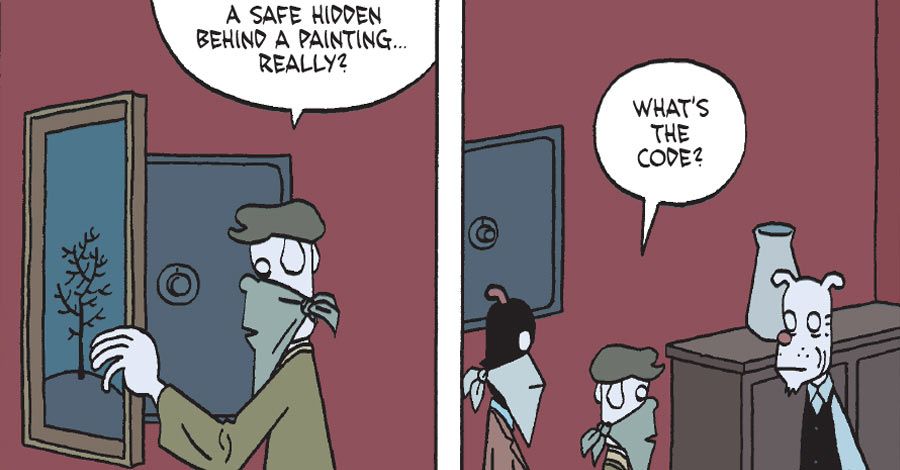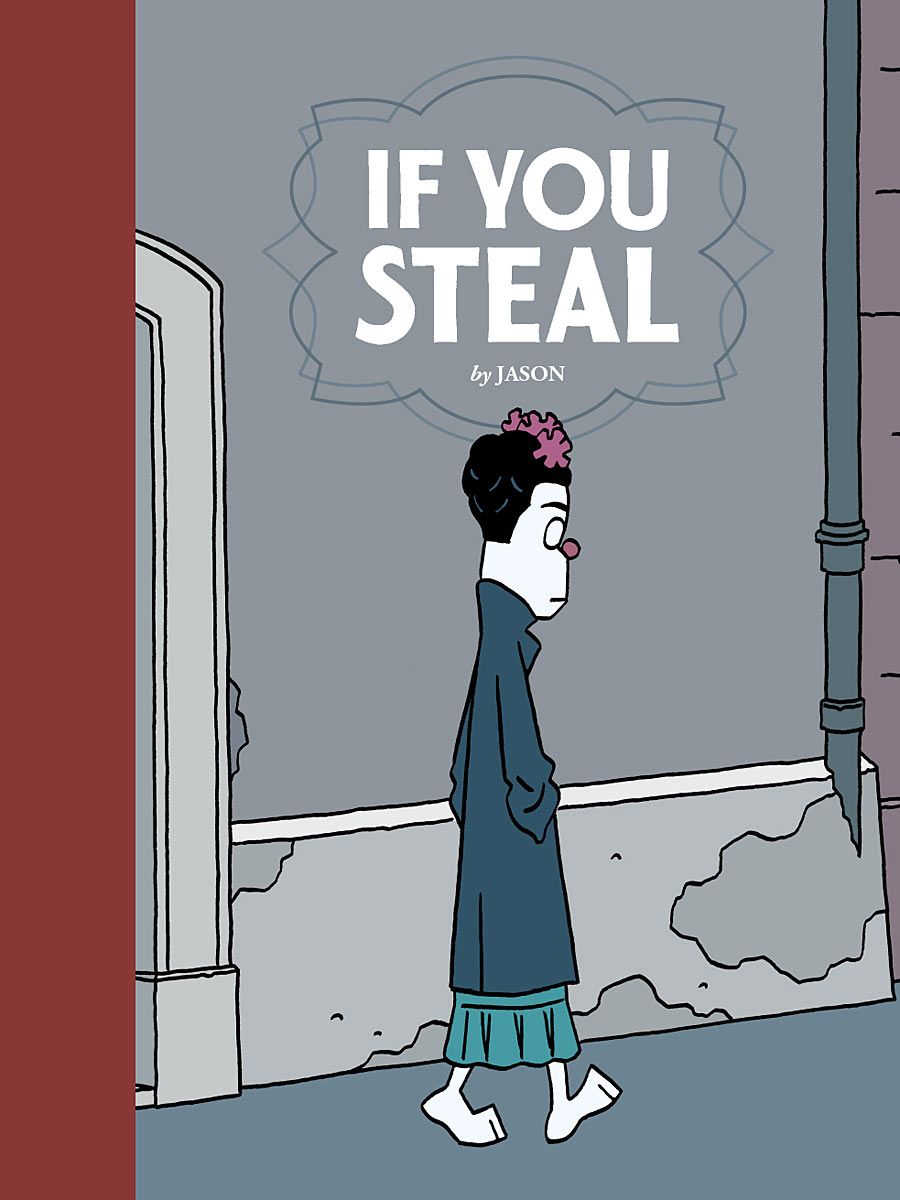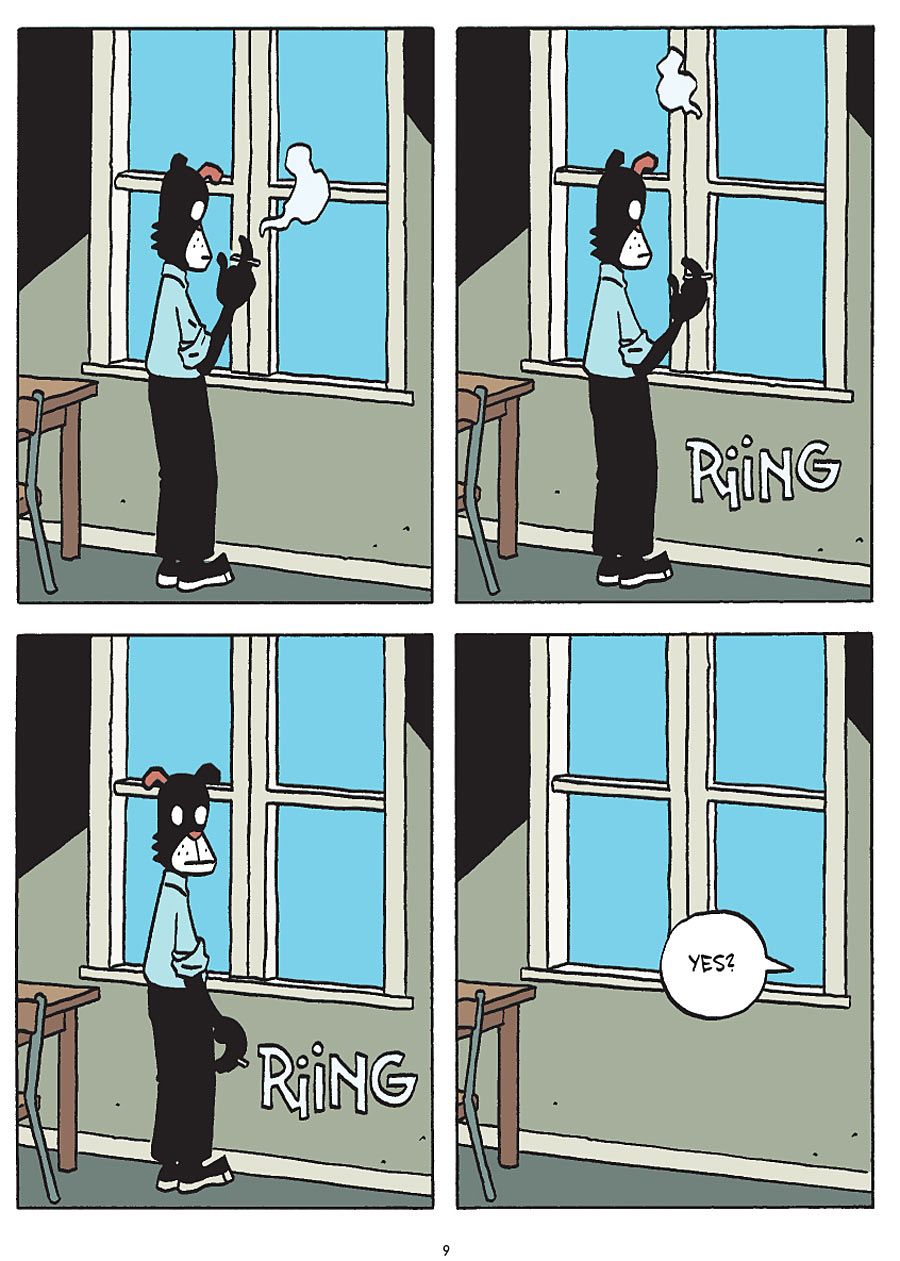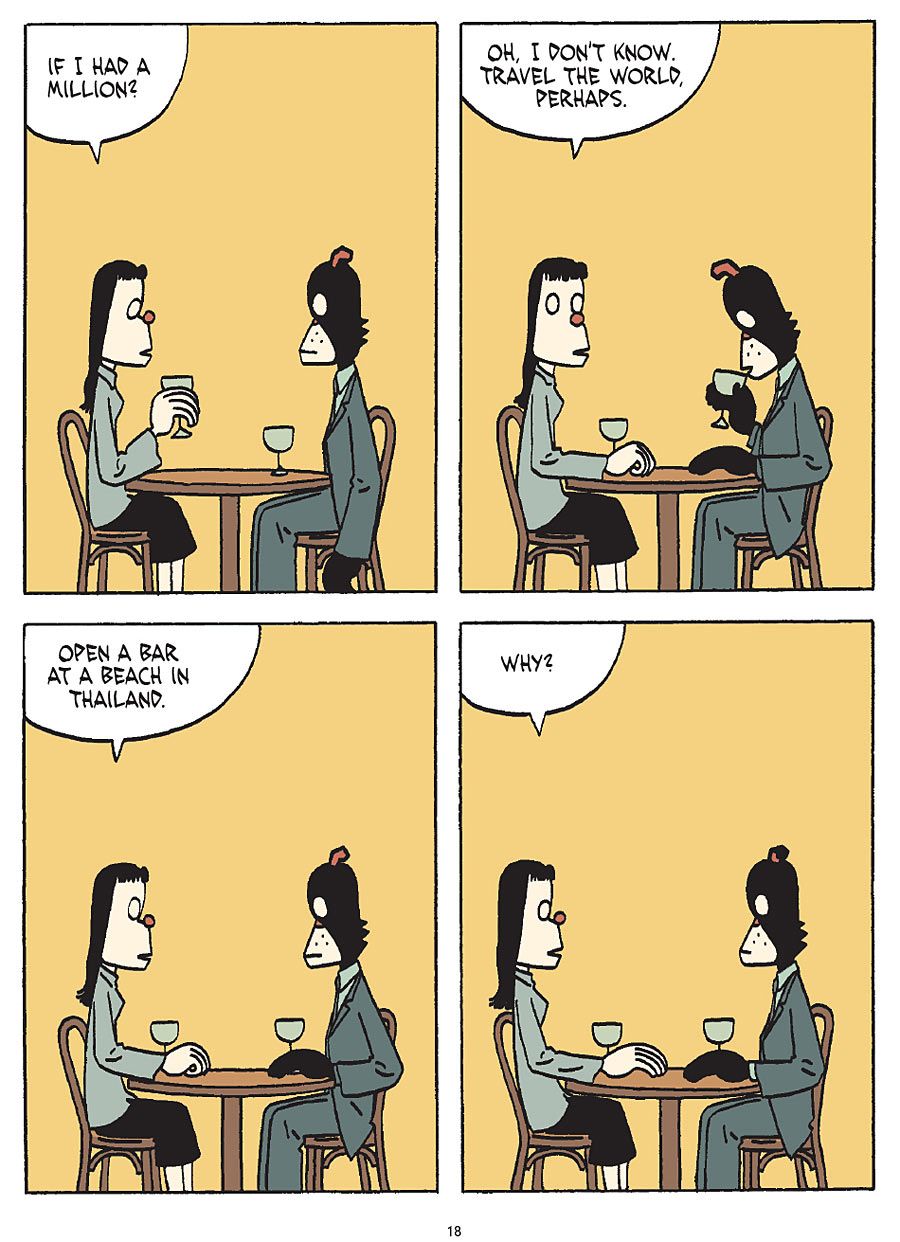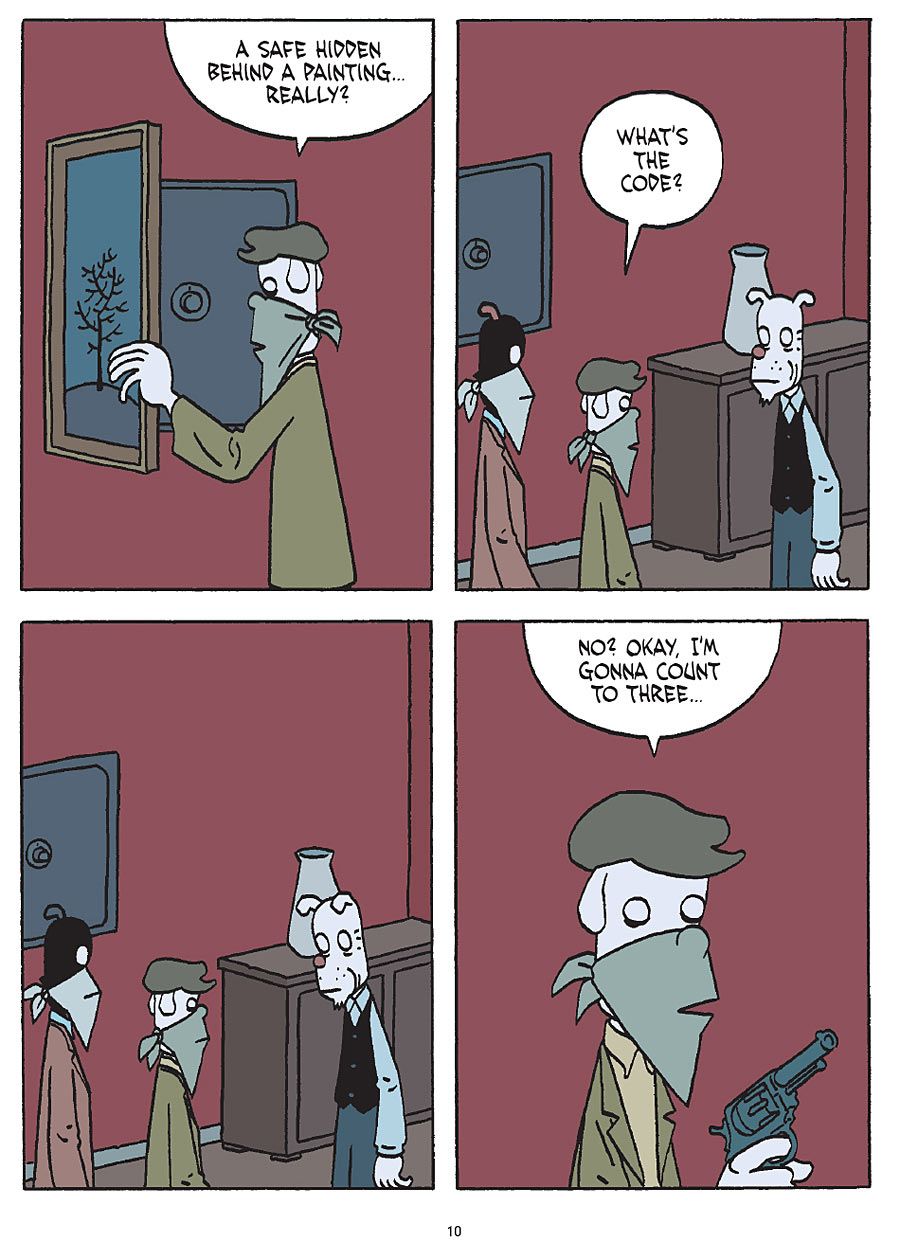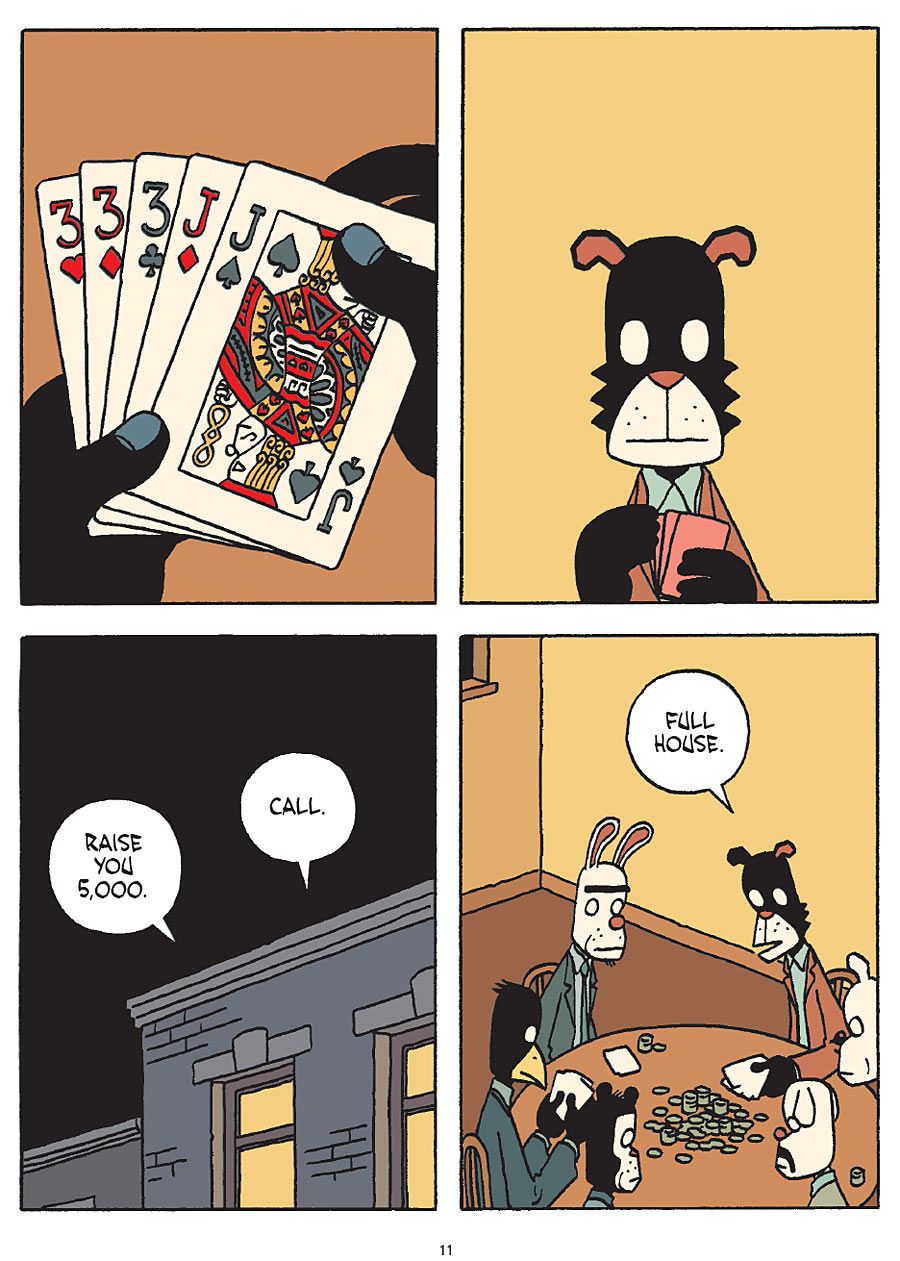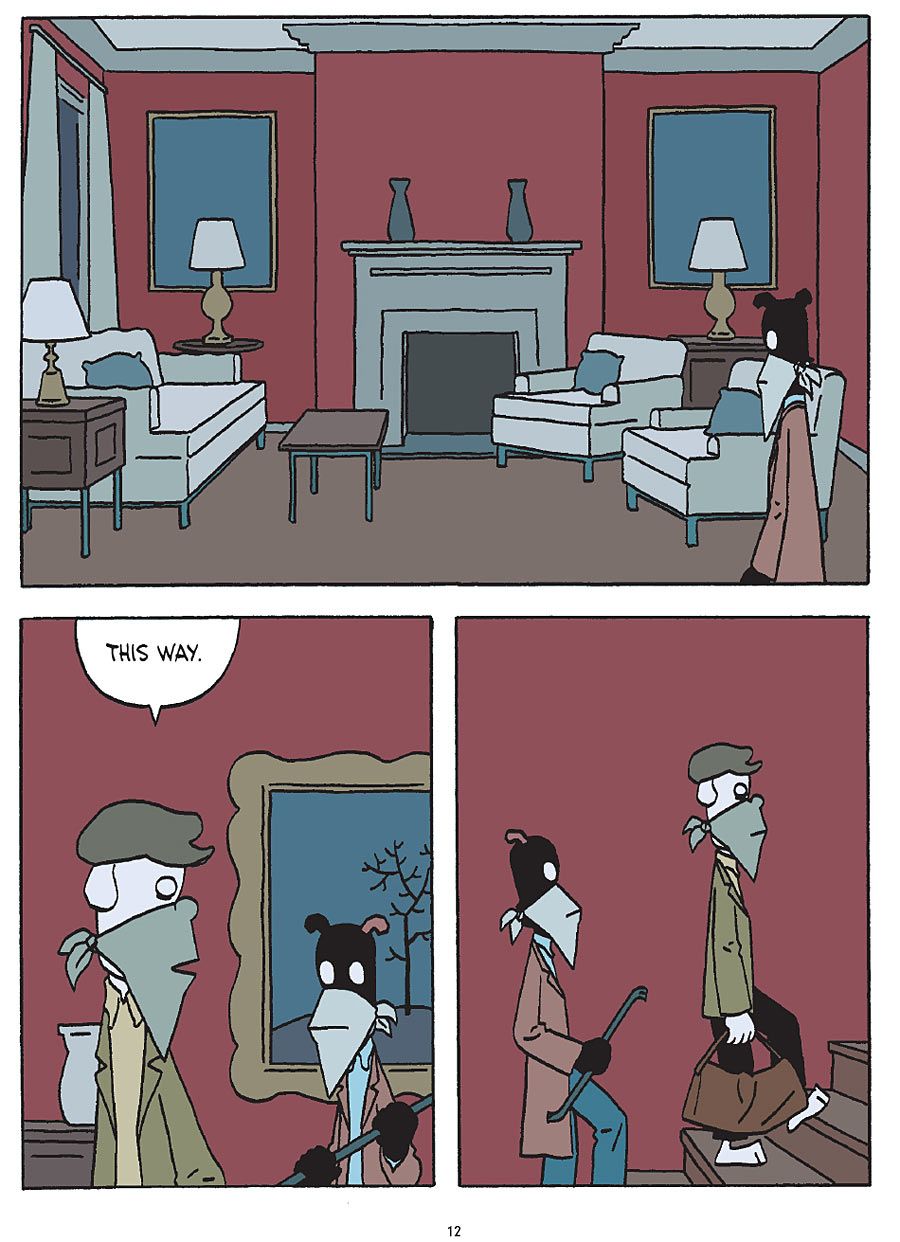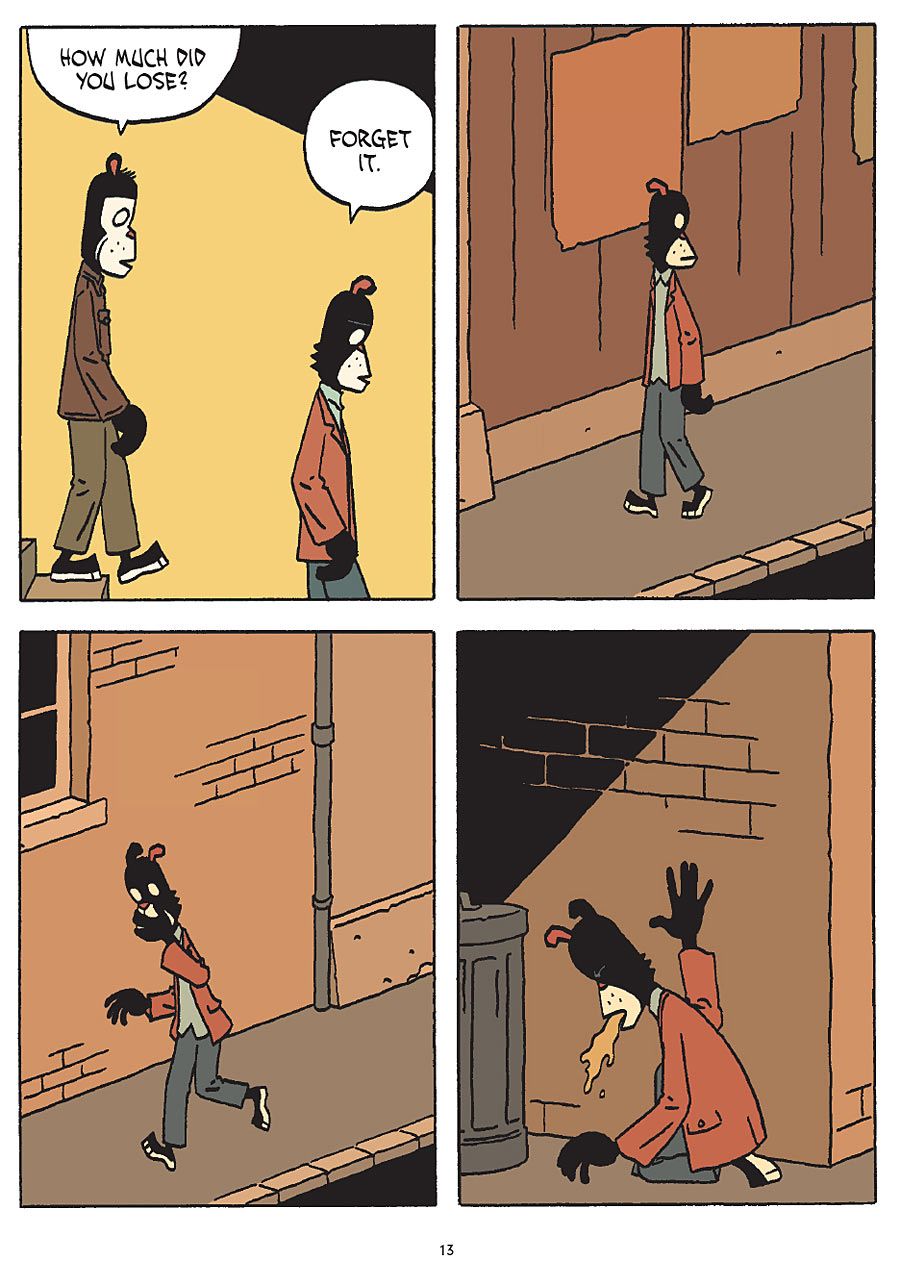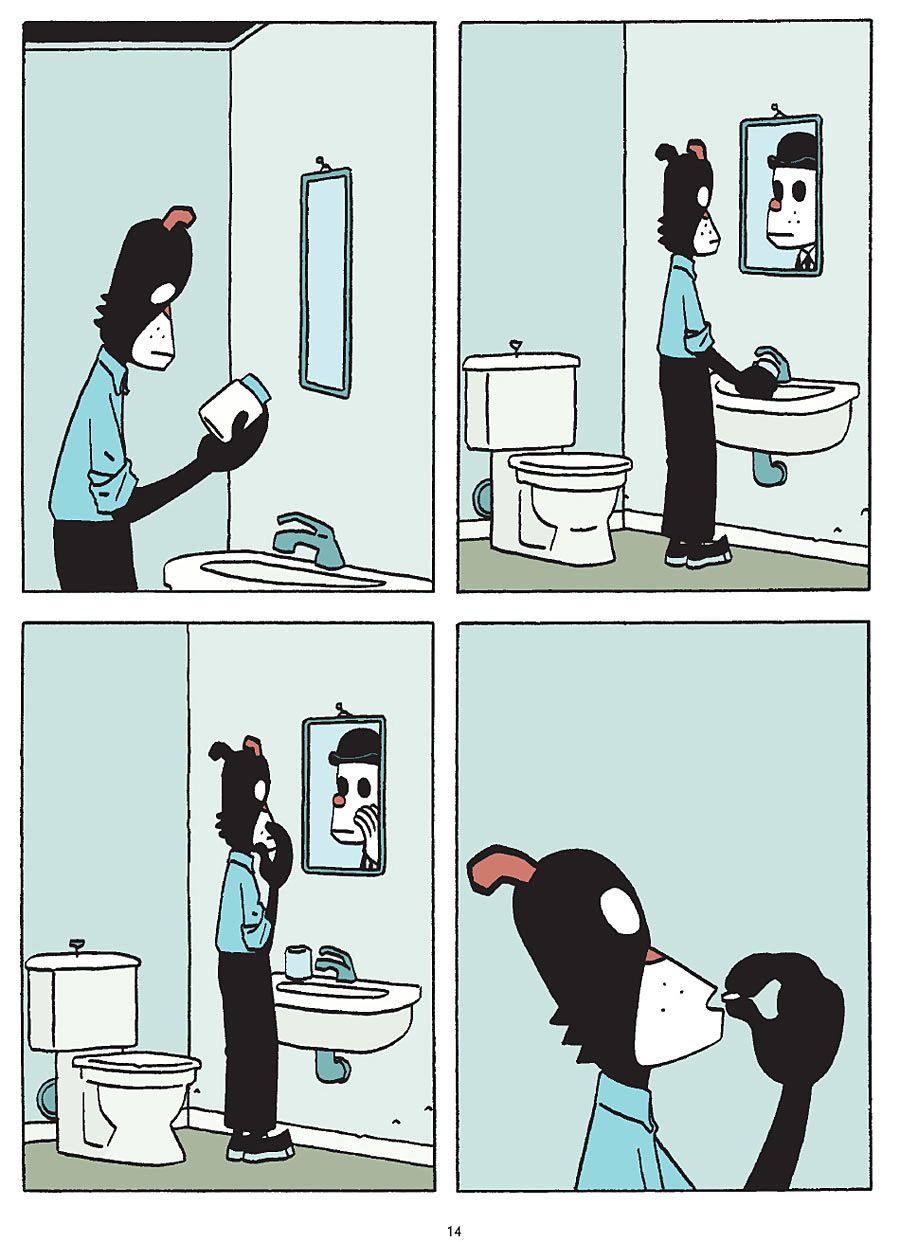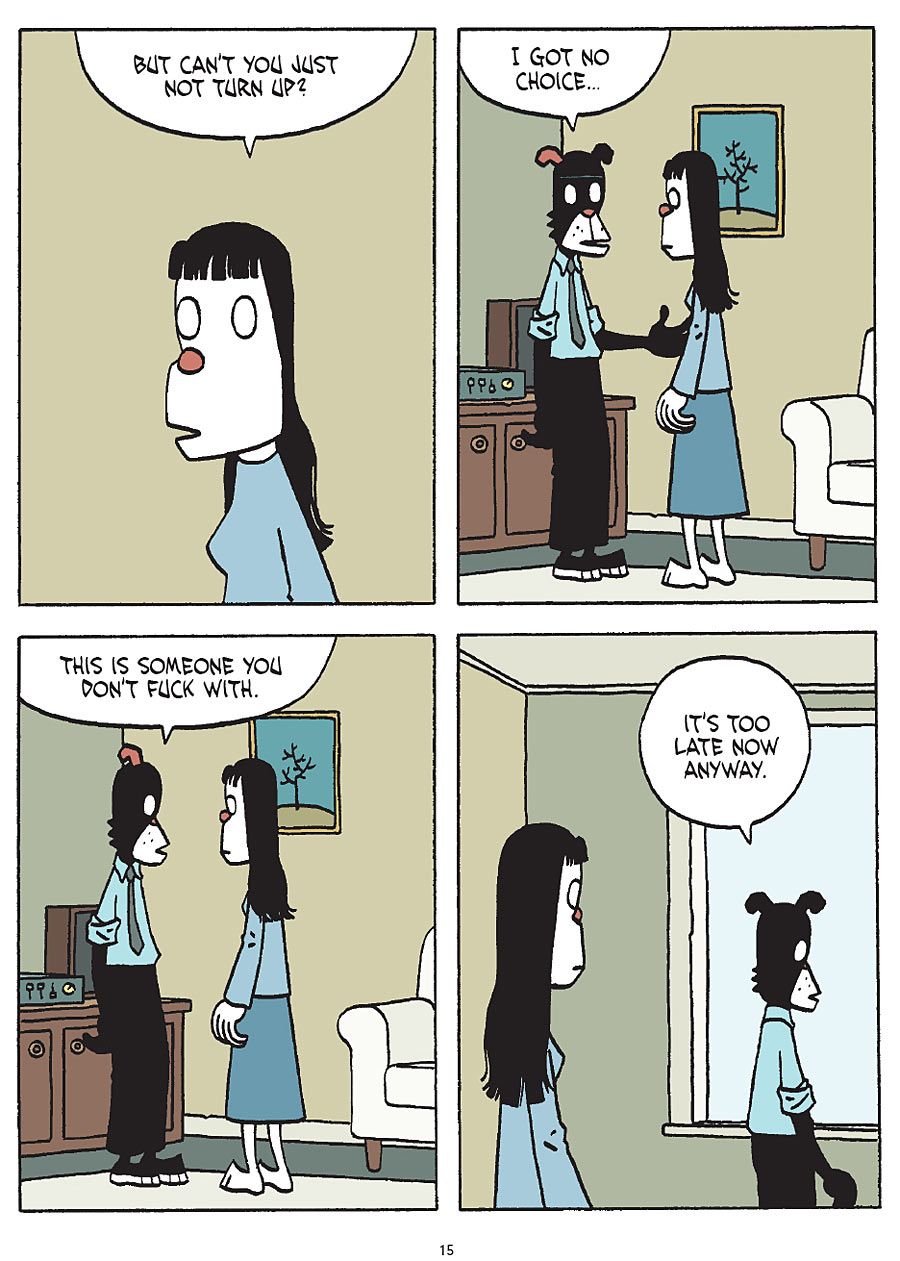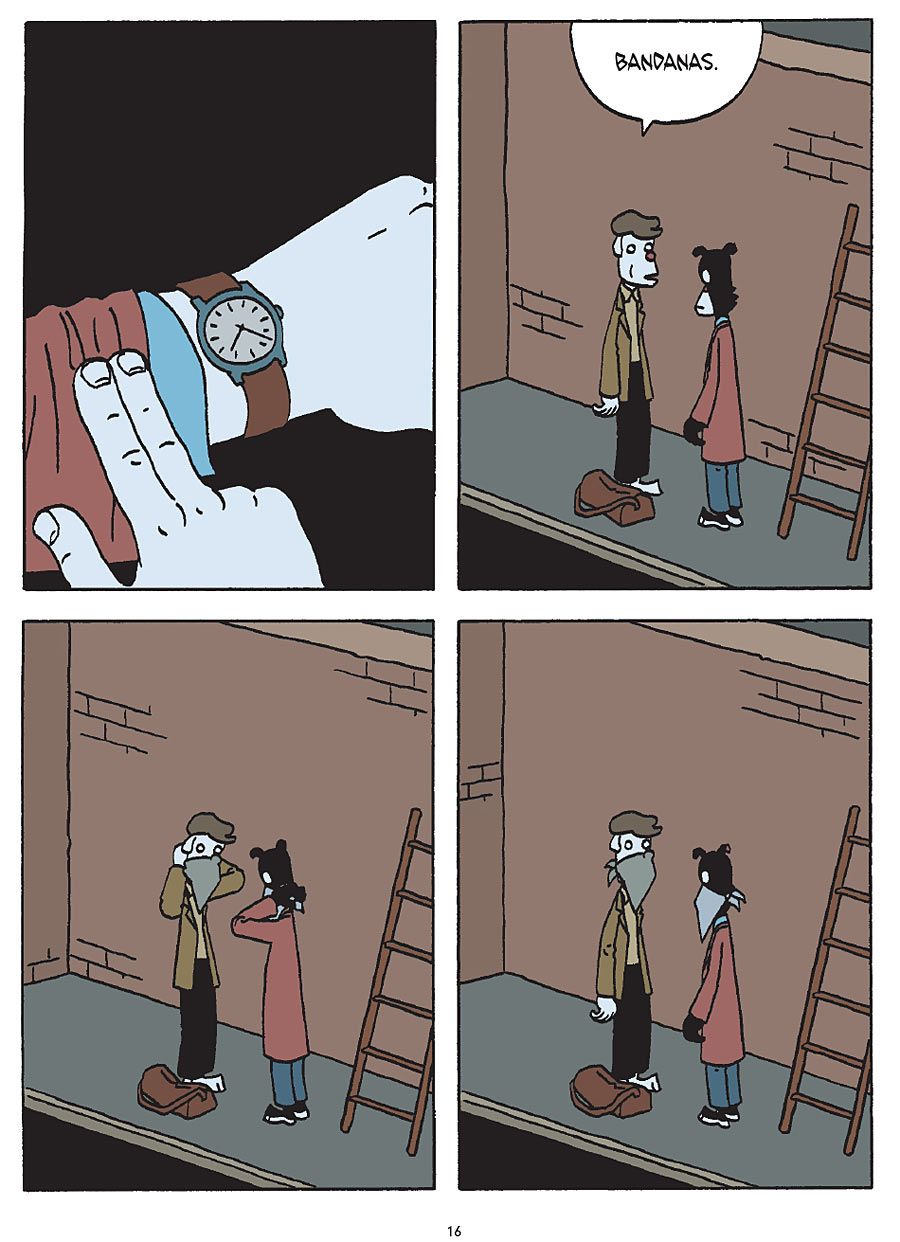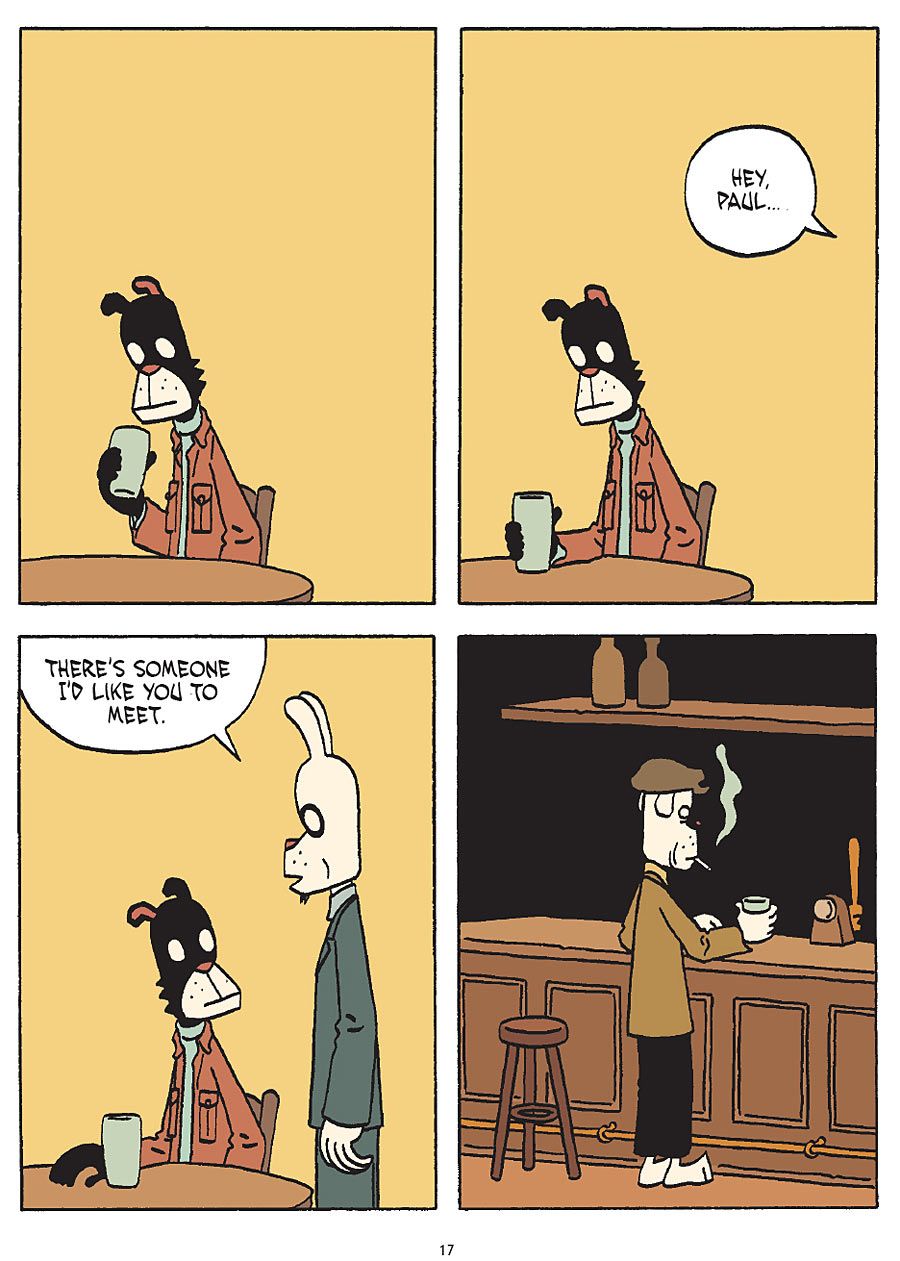Jason's short tales are known for being chock full of pop culture kitsch, genre-mashing experimentation, and quiet ennui-heavy contemplation. His latest collection, "If You Steal," which goes on sale September 6 from Fantagraphics, continues in the same vein and is likely to earn the cult-favorite cartoonist more plaudits like his 2002 Harvey Award for Best New Talent or his three Eisner Awards between 2007 and 2009 for, in order, "The Left Bank Gang," "I Killed Adolf Hitler" and "The Last Musketeer."
"If You Steal" collects eleven short stories, including the adventures of hired assassin Frida Kahlo, a pair of B-movie monster riffs, the nonlinear title story, and a haunting meditation on an elderly woman's declining mental faculties. He also riffs on an EC Comics storytelling staple, puns on a Bardot/Godot rhyme, ruminates on what may have happened during one night in the life of jazz trumpeter Chet Baker, and turns Van Morrison tunes into striking horror comic cover illustrations.
CBR News reached out to the Norwegian-born cartoonist at his home in France to provide readers with a glimpse of the flavor of and inspiration behind each of the new stories in "If You Steal." Jason also discussed his film influences and explained his move away from the traditional French comic album format.
CBR News: The title story, "If You Steal," could've been a straight-forward heist noir, but you crafted a time-jumping narration that reads like the telling is swirling down a drain -- we're just catching snippets from one moment before another swirls into view.
Jason: This story is influenced by three things. One is the film "The Limey" by Steven Soderbergh, a film that is told in non-chronological order. It's something I've been wanting to try, to tell a story more by association. And since each page is one scene, I could shuffle those pages around, to see in what order they worked best. The second influence is the song "Black and Blue" by Lyle Lovett, from the album "Pontiac," from 1987. Goddammit, I'm feeling old now, but anyway, it's a great album. That one song, it's never quite clear exactly what happens and to whom, just that someone is getting hurt. And then finally the paintings by [Rene] Magritte. Mental illness is part of the story, so I felt his paintings fit. But I also wanted to leave enough open space for each reader to be able to make their own interpretation.
"Karma Chameleon" -- Prof. Howard Jones really has no boundaries when it comes to discussing masturbation, does he?
I really like those black and white Big Bug films from the '50s, like "Them!" and "Tarantula." They have a lot of charm, and there are often some recurring characters in these films: the hero, of course, who often is a doctor or something like that; and then there is the professor, who explains everything that is going on, while smoking a pipe or not; and the professor also has a daughter or a young female assistant who needs to be rescued by the hero all the time, and then they fall in love by the end. But the professor-type is often the most interesting character; he can often be eccentric -- he's a professor after all. And, I don't know, it just seemed like a fun idea that he liked to lecture about masturbation. So yeah, who knows what that's about.
"Waiting for Bardot" is really just two guys sitting around discussing, not very deeply, women.
Those two characters have appeared earlier in two stories, so I wanted to have them in this book as well. The title is a terrible pun, of course, so you can't really drag it out too long. Six pages seemed enough. So yes, they talk about women, but clearly have no idea what they are talking about. It's nothing they have any real knowledge about, it's a mystery, like Godot.
"Lorena Velazquez" -- All I can say is, that is a lot of fighting!
I watched one of the Santo films on YouTube -- I don't remember which one -- but Lorena Velazquez is one of the actors, and she was this amazing looking woman that appeared in a lot of those films. So the story is sort of an homage to her and those films. Santo often fought vampires in one film, then the Frankenstein monster in another one. So in my story he fights everyone.
The first thing I noticed about "New Face" was the second-person narration. You don't see that often outside of some old Al Feldstein-written EC Comics stories.
Yes, I had read one of those stories, possibly in some EC book, so I've wanted to try that myself, to tell a story in the second person. In those stories the narration often tells things you already can see in the images. It's both annoying and endearing. So in my story there is that element, and then there is a break, where the narration and the images don't fit anymore. The story itself is influenced by the book "Dark Passage" by David Goodis, that also became a film with Humphrey Bogart. Plastic surgery was, I guess, a new thing, and in movies and books at the time there were often unrealistic portrayals of what happens. The writers didn't bother to do any research or to let reality stand in the way. I've for a long time had this image in my head of a face covered in bandages, like a mummy, and here was a story where I could use it.
"Moondance" is six Van Morrison song titles (the first six songs from the titular album) reimagined as horror comic covers, but what about "These Dreams of You," "Brand New Day," "Everyone," and "Glad Tidings"? And I like that album myself, but why Van Morrison?
It's such a silly idea, Van Morrison songs as horror comics; it's another thing I didn't want to drag out too much. Six pages seemed enough. I got the idea from this collection of old horror comics and covers, called "The Horror! The Horror!" I very much like those old comics, and one of them was called "Mystic." Hence, "Into The Mystic," the Van Morrison song, and the idea was born.
I like the brief, to-the-pointness of "Night of the Vampire Hunter." I hadn't seen that bit of vampire lore before, the hidden heart.
This started just as a drawing, with the Robert Mitchum character (from the film "Night of the Hunter") carrying a hammer and a stick, ready to put vampires out of business. I liked the image, so then came the idea to turn it into a story. The doll plays an important part in the film, and I wanted to use that in this version as well. It's not something new, I believe, that a vampire can't be killed because it has hidden its heart. It's been done before.
"Polly Wants a Cracker" -- As if Frida Kahlo wasn't badass enough, you cast her as an assassin? And seriously, that parrot earns a lifetime of crackers!
I like Frida Kahlo's paintings. I've never read a biography about her, except that one comic Gilbert Hernandez did , so I don't really know her story that well. It's not really meant to be about her, but I can draw Frida Kahlo as an animal character, and with the hair and the one eyebrow, you can see who it is supposed to be. In this story she happens to be a killer for hire. In some way this story is a return to the comics I did back when I did comics without words.
"The Thrill is Gone" reads like a straight crime tale, but I feel like there's a deeper reference there.
I like Chet Baker, his music. I read this biography about him, "Deep in a Dream" by James Gavin, which told of that time he got his teeth knocked out. Baker claimed it was some unknown people who attacked him for no reason. Gavin speculates that there is some connection to something Baker did. And Chet Baker was a drug addict, so it's not unreasonable to believe he did something, stole drugs or money or something, and that is why he was beaten senseless. I don't think he gave some drug dealer fake money, like in my story -- it's just something that could be said in one word balloon, without getting into a long story. But I hope the story works even for someone that doesn't know who it is or the story behind it.
"Ask Not" ties JFK and Marilyn Monroe to Nostradamus, Stonehenge, and lizard spacemen -- the layers of conspiracy beggar the imagination.
There was a period I was watching a lot of JFK assassination conspiracy films on YouTube. There are a bunch of them. And I read "Not in Your Lifetime" by Anthony Summers. And I don't really have any opinion about it, if there was a conspiracy or not. A lot of questions are unanswered. But at the same time, when celebrities die -- like Michael Jackson, or Princess Diana, or Kurt Cobain -- people can't accept it; they have to come up with some theory about it, that someone is behind it. But anyway, the JFK assassination is a fun subject, and when the story was finished I almost had a regret that I didn't do it more straight. It could have been interesting.
The stories in this book are mostly fun, silly, absurd, but "Nothing" -- man, if you have some older relatives who've suffered dementia (and I do), this story is haunting and very sad.
No, I've never had any experiences with that myself. I've used the skeleton-head bird characters before, in "Shhh!" And it's never been quite clear what they represent. Death? Fate? So I could use them again here is a slightly different context. This story started with one image, of the bird character holding up his hand and covering the eyes of someone else, so you can't see who it is. And then the rest of the story followed from that. And I think it's the most emotional story in the collection so that is why I placed it at the end.
I'm curious about your influences. In your art, I can definitely see the ligne claire of Herge, and you draw a lot on mashups of genre entertainment and pop culture icons. But the dry humor, quiet pacing and ennui of your comics make the genre elements play less sensationally than they would in a B-movie thriller.
Yes, the drawings are clearly influenced by Herge. I don't think I follow all the rules he set up for ligne claire. And I prefer the early "Tintins," where the backgrounds were just sketched in. In the later albums everything had to be perfect. The line lost some of the life it had. And I think the storytelling of Herge is actually more important than the clear line, the fact that there is never any doubt about what is going on in the images. They are very inviting that way.
But I try to pick up story influences from other places than comics -- from paintings, books, film. One of my favorite directors is Aki Kaurismäki, who does these very minimalistic, melancholy but also funny films, where the characters aren't allowed to show any feelings. I guess he got that from Robert Bresson. And there's also Jim Jarmusch and Hal Hartley, and then the old silent films from Buster Keaton and so on.
This the first book you've put out in the States since Kim Thompson, who worked with you as translator, editor and publisher at Fantagraphics, passed in 2013. You dedicated this book to him. Beyond the personal relationship (everybody seems to have loved Kim and my one brief, personal encounter with him seven or eight years ago was consistent with those remembrances), does his absence change anything for you in terms of your relationship with Fantagraphics and the U.S. Market?
I believe "Lost Cat," my previous book, was one of the last that Kim translated. He died far too young. When you think about what he could have done with another 20 years... But there hasn't been any change in my relationship with Fantagraphics. Both Eric Reynolds and Gary Groth sent me a mail saying they wanted to continue publishing my comics. The one difference is I now do the translation myself, and then someone at Fantagraphics checks it to see if it reads OK for an American reader.
What are you working on now?
I'm working on two things. One is a sixth and probably final French 48-page album, and the other thing is a longer book, the same format as "Lost Cat," with one long story.
Why do you expect the next 48-page French album to be your last one?
Because I prefer the smaller size book, where you can use how many pages you like. I grew up reading the French albums, but in the end it's a bit artificial that you have to stop the story at 48 or eventually 62 pages. The story for this album that I'm working on is sort of a sequel to "The Left Bank Gang," so it feels right to keep it in that format.
"If You Steal" goes on sale September 6 from Fantagraphics.

